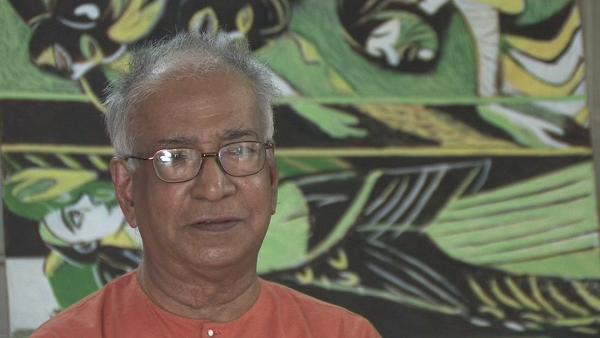NEXT STORY

Teachers and students at the Slade School of Art
RELATED STORIES

NEXT STORY

Teachers and students at the Slade School of Art
RELATED STORIES



While this process was going on in Santiniketan and Baroda for you, another kind of Indian art world was taking shape in Bombay and Delhi, with which you had relatively little contact.
No, I don’t have much contact, yes. Really speaking that was taking shape, not exactly at that time. It is later, and by that time I had already made my choices, and now I keep a certain amount of distance from the whole thing.
But weren’t the Bombay progressives happening in the late ’50s, early ’60s?
Well, I don’t know. The sort of Bombay progressives and the Calcutta progressives, somehow the art historians make much of it, but I don’t think too highly of them. That is my personal feeling, but then the whole question is that there were some very talented artists among them, and they tried to make a mark in various parts of the world, that I agree. But then those progressives were not terribly progressive, and their manifestos are not so terribly balanced forward-thinking manifestos. So really speaking, I do not give much importance to it, but it’s all right for the art writers to do. I have no quarrel with them.
KG Subramanyan (1924-2016) was an Indian artist. A graduate of the renowned art college of Kala Bhavana in Santiniketan, Subramanyan was both a theoretician and an art historian whose writings formed the basis for the study of contemporary Indian art. His own work, which broke down the barrier between artist and artisan, was executed in a wide range of media and drew upon myth and tradition for its inspiration.
Title: The Bombay and Calcutta progressives
Listeners: Timothy Hyman
Timothy Hyman is a graduate of Slade School of Fine Art, London, in which he has also taught. In 1980 and 1982, he was Visiting Professor in Baroda, India. Timothy Hyman has curated many significant art exhibitions and has published articles and monographs on both European and Indian artists.
Duration: 1 minute, 22 seconds
Date story recorded: 2008
Date story went live: 10 September 2010